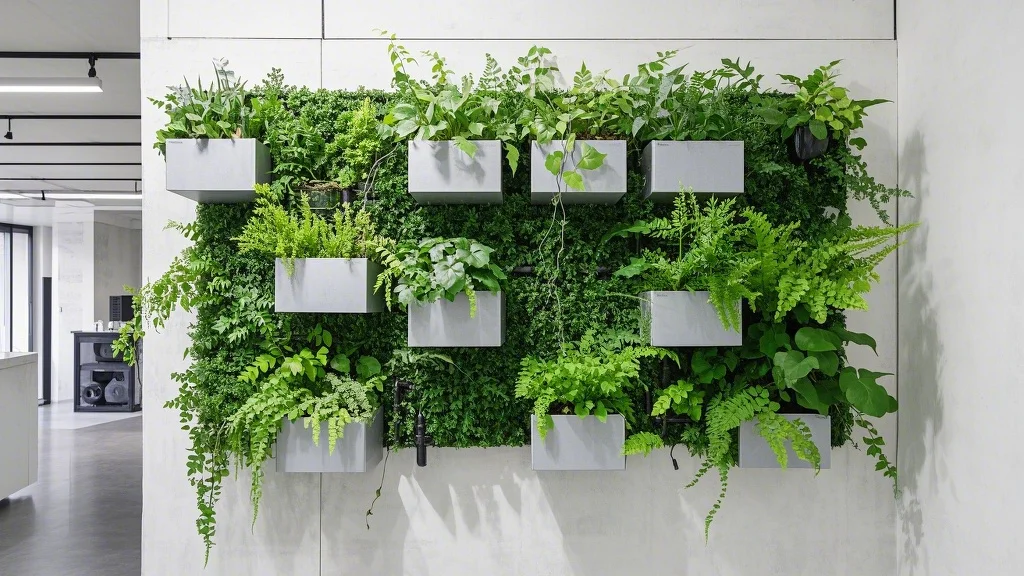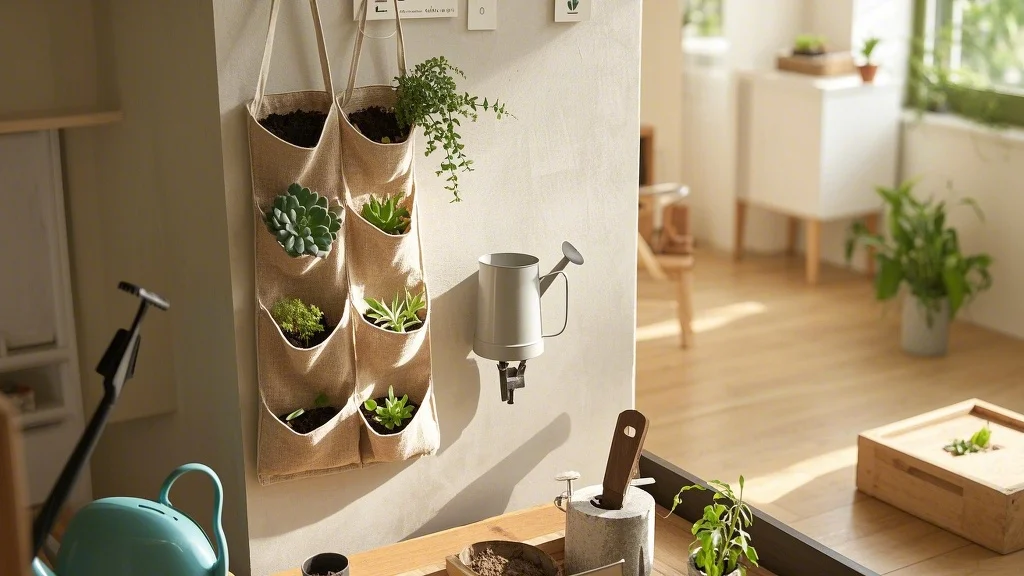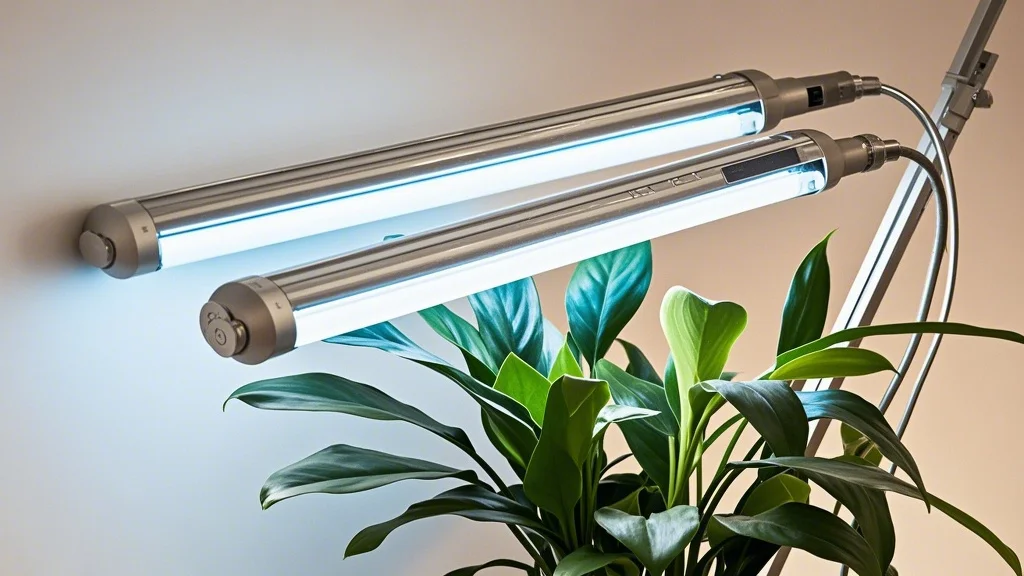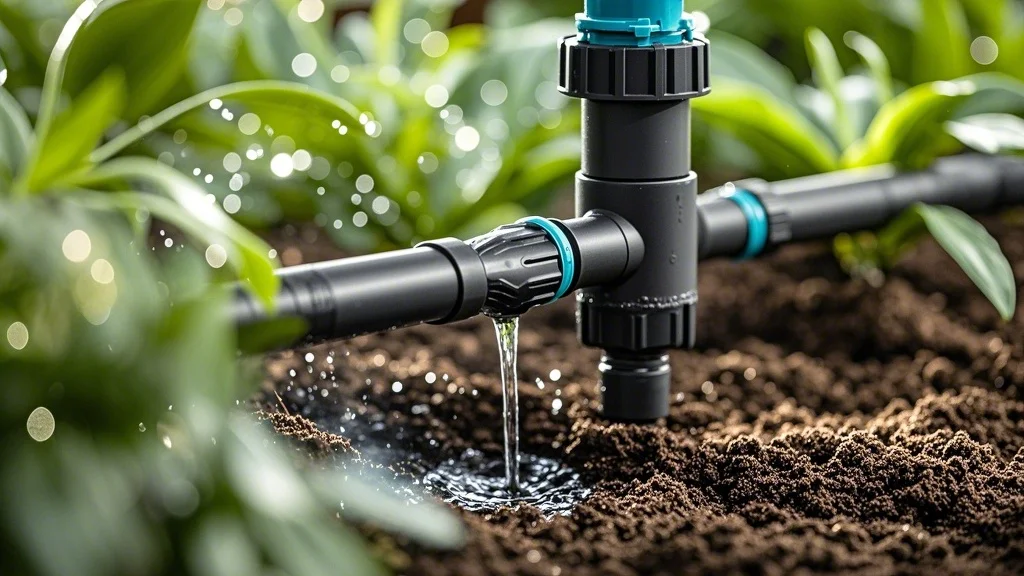Living in a small urban apartment doesn’t mean you have to sacrifice your love for greenery. Plant walls, also known as vertical gardens or living walls, offer an innovative solution for bringing nature indoors without consuming precious floor space. This guide will explore various options for creating stunning plant walls in compact living areas, providing you with the knowledge and inspiration to transform your apartment into a lush urban oasis.
Contents
Benefits of Plant Walls in Small Spaces
Before diving into the how-to, let’s consider the advantages of incorporating a plant wall in your apartment:
- Space-saving: Utilize vertical space efficiently, perfect for small apartments.
- Air purification: Plants naturally filter indoor air, improving air quality.
- Aesthetic appeal: Create a striking focal point and add visual interest to your living space.
- Noise reduction: Plants can help absorb sound, creating a more peaceful environment.
- Stress reduction: Surrounding yourself with greenery can have calming effects and boost well-being.
Types of Plant Walls for Small Spaces
1. Modular Systems

Modular plant wall systems consist of individual units that can be arranged and expanded as desired. These are ideal for renters or those who want flexibility in their design.
Pros:
- Easy to install and rearrange
- Scalable to fit different wall sizes
- Often come with built-in irrigation systems
Cons:
- Can be more expensive than DIY options
- Limited plant variety depending on the system
Best for: Those who want a polished, low-maintenance solution.
2. Pocket Planters
Fabric pocket planters hang on the wall and contain multiple pockets for individual plants. They’re lightweight and easy to install, making them perfect for renters.
Pros:
- Affordable and easy to set up
- Allows for a variety of plant types
- Can be easily moved or replaced
Cons:
- May require more frequent watering
- Can look less structured than other options
Best for: Budget-conscious gardeners who want versatility.
3. Floating Shelves
While not a traditional “plant wall,” a series of floating shelves can create a similar effect while offering more flexibility in styling.
Pros:
- Customizable layout and design
- Can accommodate a wide variety of plant sizes
- Doubles as storage for other items
Cons:
- Requires more wall mounting
- May not create as lush of an appearance as other options
Best for: Those who want to mix plants with other decor items.
4. Trellis Systems
A wall-mounted trellis can support climbing plants, creating a green screen effect.
Pros:
- Creates a natural, organic look
- Can cover a large area with fewer plants
- Ideal for certain plant species like ivy or jasmine
Cons:
- Limited to climbing plant varieties
- Takes time for plants to grow and fill in
Best for: Patient gardeners who enjoy a more natural, less manicured look.
5. Magnetic Planters
These small planters attach to a magnetic board, allowing for easy rearrangement and a modern, minimalist look.
Pros:
- Highly customizable and easy to rearrange
- Clean, contemporary aesthetic
- Good for small plants like succulents or air plants
Cons:
- Limited to smaller plants
- Requires installation of a magnetic board
Best for: Modern design enthusiasts who enjoy frequently changing their decor.
Choosing the Right Plants for Your Wall
Selecting appropriate plants is crucial for the success of your small space plant wall. Consider the following factors:
- Light conditions: Choose plants that match the light levels in your apartment.
- Watering needs: Group plants with similar watering requirements together.
- Growth habits: Select plants that won’t outgrow their space quickly.
- Maintenance level: Be realistic about the time you can dedicate to plant care.
Some plant varieties well-suited for vertical gardens in small spaces include:
- Pothos (Epipremnum aureum)
- Spider Plant (Chlorophytum comosum)
- Ferns (various species)
- Philodendron (various species)
- Air Plants (Tillandsia)
- Succulents (various species)
- English Ivy (Hedera helix)
- Peperomia (various species)
- Ficus Pumila (Creeping Fig)
- Tradescantia (Spiderwort)
DIY Plant Wall Project

For those who enjoy a hands-on approach, here’s a simple DIY plant wall project using a pocket planter system:
Materials Needed:
- Fabric pocket planter
- Potting soil
- Selection of small plants
- Wall anchors and screws
- Level
- Drill
- Watering can with a narrow spout
Steps:
- Choose your wall location, ensuring it receives appropriate light for your chosen plants.
- Mark the hanging points for your pocket planter using a level to ensure it’s straight.
- Install wall anchors and screws at the marked points.
- Hang the empty pocket planter on the wall.
- Fill each pocket about 2/3 full with potting soil.
- Gently remove plants from their nursery pots and place them in the pockets, adding more soil as needed.
- Water thoroughly, allowing excess water to drain.
- Monitor your plants regularly, adjusting care as needed.
Maintenance Tips for Small Space Plant Walls
- Watering: Develop a consistent watering schedule based on your plants’ needs. Consider using a watering can with a long, narrow spout for precise watering.
- Fertilizing: Use a balanced, water-soluble fertilizer during the growing season, following package instructions for dilution.
- Pruning: Regularly trim plants to maintain their shape and prevent overcrowding.
- Pest control: Inspect plants weekly for signs of pests. Treat issues promptly with neem oil or insecticidal soap.
- Rotation: Periodically rotate plants if some areas receive more light than others to ensure even growth.
- Cleaning: Dust leaves gently with a soft, damp cloth to keep them looking fresh and allow for better light absorption.
- Replacement: Be prepared to replace plants that outgrow their space or don’t thrive in your conditions.
Overcoming Common Challenges
Limited Light
Solution: Choose low-light tolerant plants or install grow lights to supplement natural light.
Watering Difficulties
Solution: Consider self-watering systems or use moisture meters to avoid over or under-watering.
Soil Mess
Solution: Use drip trays or line the back of fabric planters with plastic to prevent water and soil from damaging your wall.
Weight Concerns
Solution: Ensure your wall can support the weight of your chosen system. Consider lightweight options like air plants or succulents if weight is a significant issue.
Rental Restrictions
Solution: Opt for freestanding plant wall systems or use damage-free hanging methods approved by your landlord.
Conclusion
Creating a plant wall in a small apartment is an excellent way to maximize your space while bringing the beauty and benefits of nature indoors. Whether you choose a pre-made system or embark on a DIY project, the key to success lies in selecting the right plants, providing proper care, and being willing to adapt your approach as you learn what works best in your unique space.
With a bit of creativity and patience, you can transform even the smallest apartment into a verdant retreat. Not only will your plant wall serve as a stunning focal point, but it will also contribute to a healthier, more relaxing living environment. So go ahead, think vertically, and let your urban jungle flourish!









